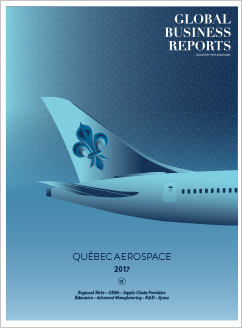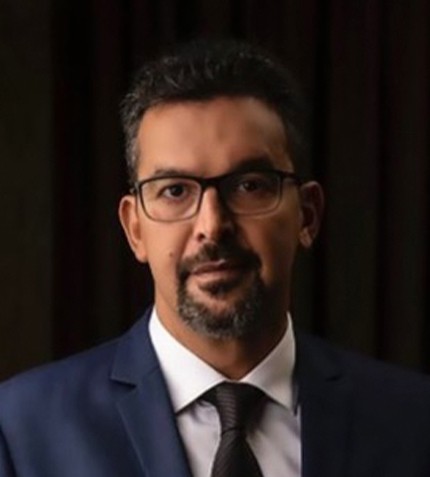
The mission of the Ministry of Economy, Science and Innovation of the Government of Québec is to support business growth, entrepreneurship, science, innovation, export trade and investment in the province.
RELATED PUBLICATION
ARTICLES FROM THIS PUBLICATION
- Interfacing with Industry: Québec’s Universities Fortify Aerospace Activity
- Driving Efficiency to Increase Competitiveness: Québec’s Service and Equipment Providers
- The Big Four and the Competitiveness of Québec’s Aerospace Supply Chain
- Banding Together: Québec’s Innovation Ecosystem
- Aerospace in Québec: The Case for an Industrial Policy
- A New Order: Québec’s Supply Chain Reaches Turning Point
- Québec’s Aerospace 4.0: A Solution to Cost Pressures?
- Quebéc Aerospace: Education
- Safety First
Dominique Anglade
MINISTER OF ECONOMY, SCIENCE AND INNOVATION, GOVERNMENT OF QUÉBEC
With 50% of Canadian aerospace production based in Québec and C$14.4 billion in sales in 2016, what is the significance of the aerospace sector to Québec’s economy?
Québec’s aerospace industry is critical to the economy. Generally speaking, Québec’s economy is performing well, with low unemployment rates and a balanced budget for three years running, creating a strong framework. Aerospace is a key area of focus for economic development because it aligns with three main pillars that must be met for economic growth: entrepreneurship, advanced manufacturing and exports. For example, aerospace comprises the highest concentration of R&D out of any other industry and is the number one export driver, which is key considering exports (40% to the rest of Canada and 60% internationally) account for 50% of Québec’s GDP. The sector also employs 40,000 people and Bombardier alone is the largest aeronautics company in Canada. For these reasons, the government has launched industrial strategies over the years to support the industry and has recently made unprecedented investments into developing the sector, particularly focusing on innovation.
Could you elaborate on the government’s support for the industry?
We have introduced many initiatives related primarily to R&D and exports and have chosen to invest heavily in Bombardier’s C-series of which we own 49.5%, reflecting our clear intent to support the aerospace industry. Given that we are a shareholder, this should be viewed as an investment, not a subsidy. Another example of our commitment was our ability to move Bell Helicopter’s production of the 505 model from the United States to Québec. Equally important is our work to support the space sector, apparent in our recent significant investment in a C$200 million project led by MDA. In total, we have invested C$400 million in advanced manufacturing this year, associated with 242 projects.
How important are the big four OEMs in driving Québec’s aerospace cluster?
The OEMs are the anchors of the industry and set the standards for the SMEs that support them. The days in which the OEMs had many suppliers are long gone and it is now paramount that SMEs meet the standards of global multinationals in order to approach contracts. This is pushing SMEs to consolidate. The globalization of SMEs is critical and much of the Ministry’s strategy is focused on bringing this about.
Whilst dynamics are shifting, smaller companies are still able to enter the market. Many companies are breaking the norm, such as start-ups creating phenomenal digital technologies in areas such as artificial intelligence (AI). Larger companies will acquire these smaller companies or they will grow into larger entities and reach greater commercial success.
In other aerospace markets such as Italy, consortiums are forming among SMEs to extend their capabilities. Is this happening in Québec?
This is definitely happening. The form that it might take may vary, from a merger to bidding together on projects and partnering through organizations like CRIAQ. In order to compete in the globalized business world, SMEs need to take such an approach.
What is the government doing to support SMEs in reaching international markets?
In order to export, SMEs need to become top performers; to do this they need to invest in Industry 4.0 processes and in automation in particular. For this reason, the Ministry launched the MACH-FAB 4.0 initiative with Aéro Montréal which focuses on helping SMEs transition to Industry 4.0. The Ministry also launched an export strategy in October 2016 and has a dedicated organization to support exports. Every time we travel internationally to events, we bring an aerospace team to promote exports from SMEs and to find forums for them to meet customers.
Do you expect any challenges with the change in U.S. Administration, and in which international markets do you expect to see most growth?
There is no question that relations are getting tougher with the United States. However, counterparts in states such as New York, Texas, Hawaii, Pennsylvania and Maine have made it clear that they want to keep current commercial agreements in place because they see the benefits. The Canadian and the U.S. economies are highly integrated–a finished product may have crossed the border five times during development. In addition, whilst the U.S. trade deficit is huge, the percentage associated with Canada is very low at less than 2%. NAFTA has been in place for some time, and a degree of adapting could in fact be beneficial to all parties.
The U.S. market is our first priority. We have created corridors of investment through Québec companies with bases elsewhere. Asia is a huge market for the aerospace industry and is a key market for Québec in terms of growth. We are not too concerned about the threat from Asian markets because of the investment that we are making in advanced manufacturing and innovation. It is more likely that Asia will look to Québec as a global leader in aerospace.
Where does the greatest opportunity lie in the market for foreign direct investment?
Tier 1s are the missing element in Québec’s ecosystem. There are specific companies the Ministry is targeting that could add significantly to the sector in Québec. The government will remain focused on attracting, advising and investing in such companies.
Québec ranks very highly internationally as an aerospace hub. What steps will be taken to ensure its prominent position is maintained?
We can always do more by raising our ambitions and having bigger dreams. The C-Series program will definitely spur growth in the industry. We have had a tough past few years, but with the strategy we have in place and the economic environment, Québec is now widely recognized as an exciting hub.











